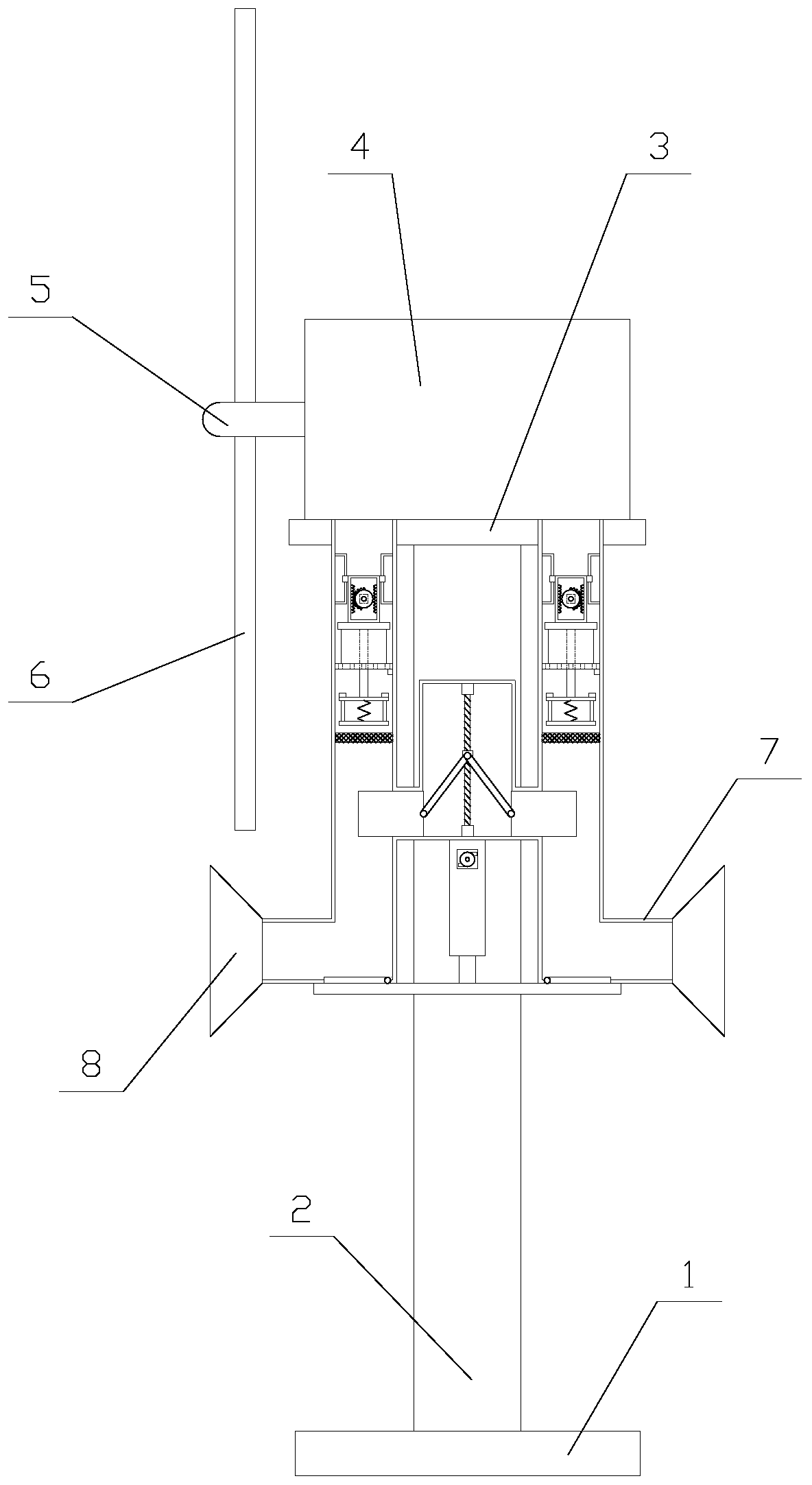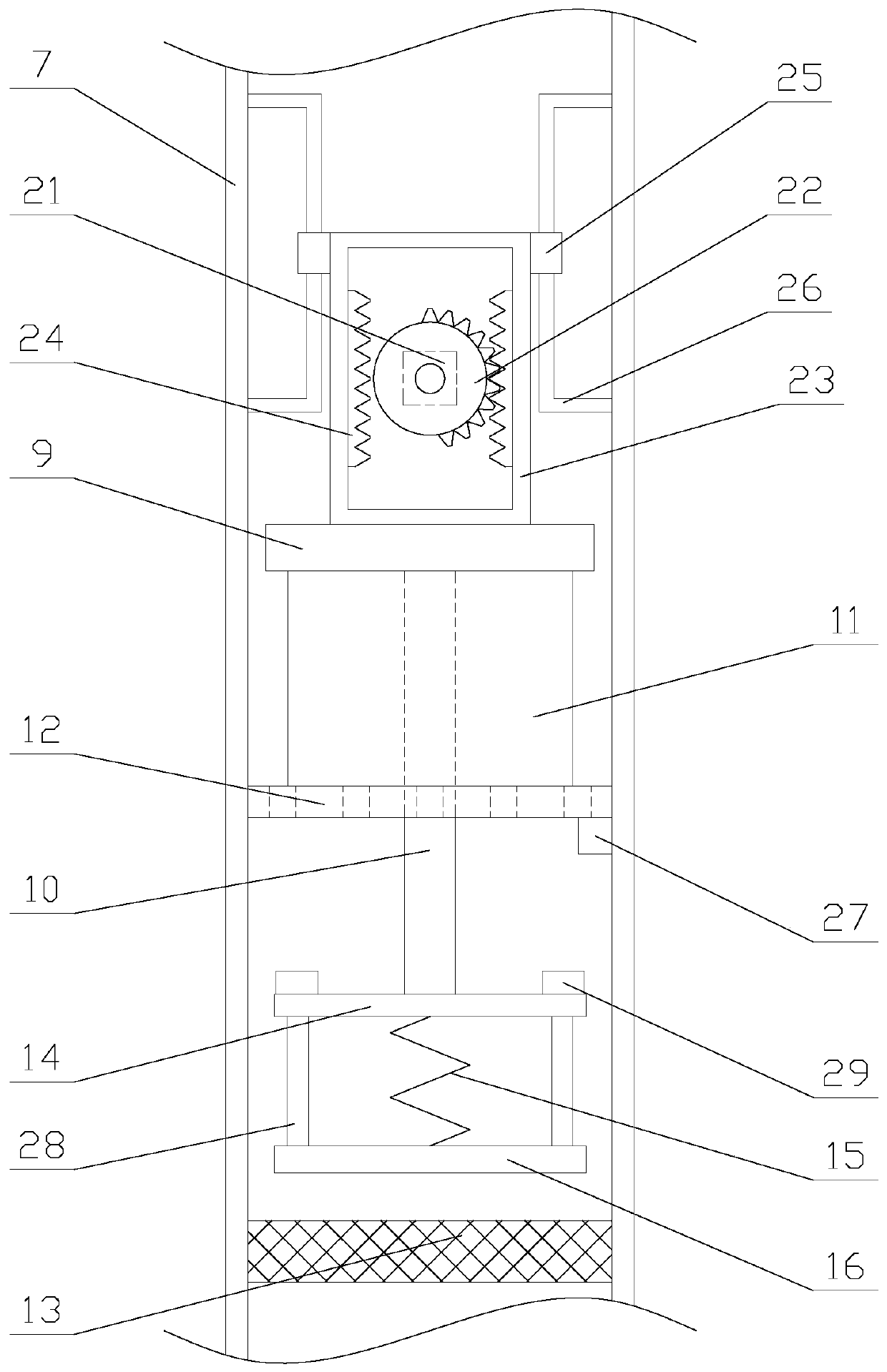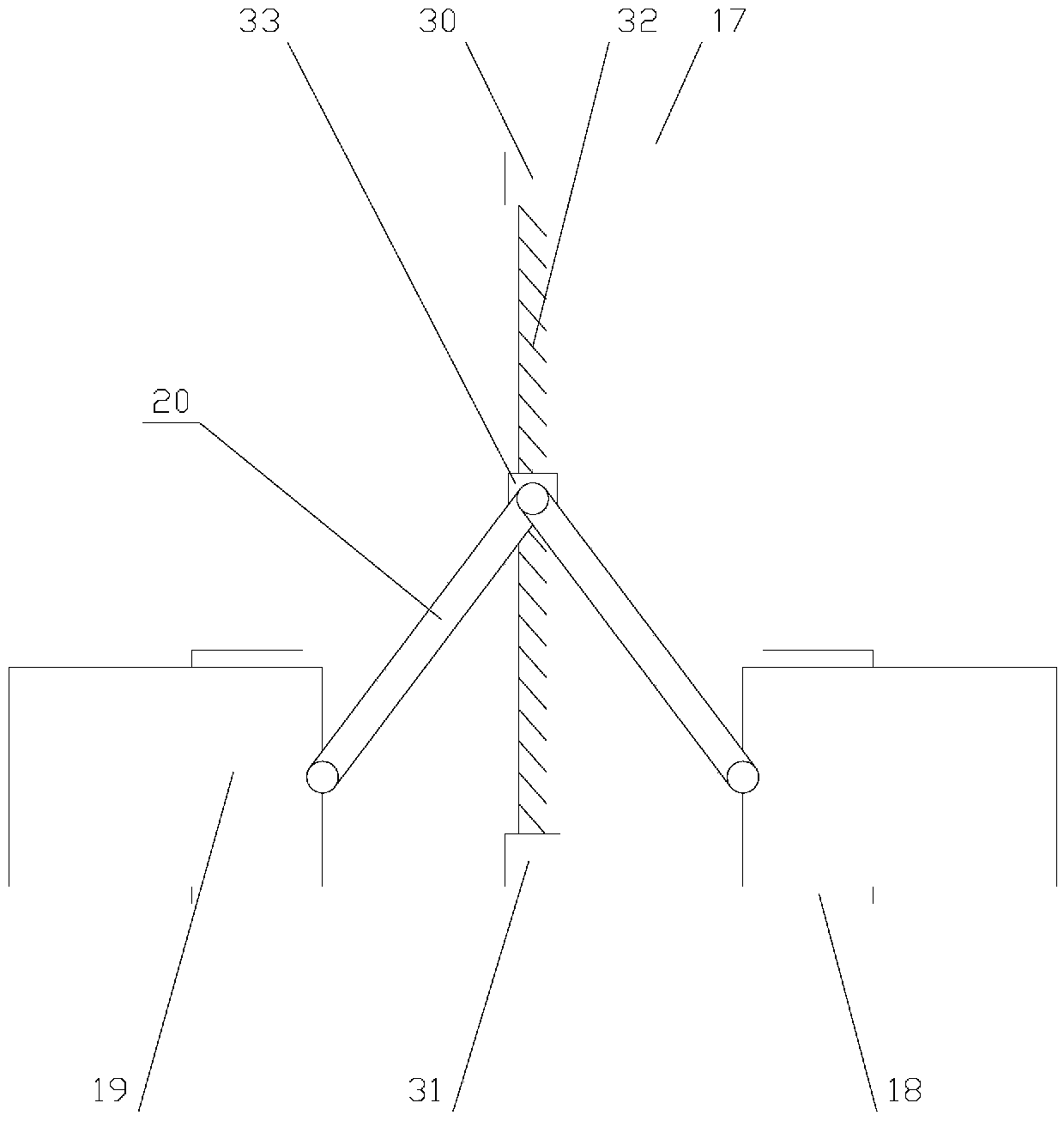An intelligent wind turbine with strong climate adaptability based on the Internet of Things
A technology for wind power generators and adapting to the climate, which is applied in the direction of wind power engines, wind power motor combinations, wind power generation, etc. It can solve the problems of wind turbine parts corrosion, heat cannot be dissipated, and the output power of wind turbines increases, so as to achieve stable and reliable operation and convenient operation. Ventilation and heat dissipation, the effect of improving adaptability
- Summary
- Abstract
- Description
- Claims
- Application Information
AI Technical Summary
Problems solved by technology
Method used
Image
Examples
Embodiment Construction
[0026] The present invention is described in further detail now in conjunction with accompanying drawing. These drawings are all simplified schematic diagrams, which only illustrate the basic structure of the present invention in a schematic manner, so they only show the configurations related to the present invention.
[0027] Such as figure 1 As shown, an intelligent wind generator based on the Internet of Things with strong climate adaptability includes a base 1, a tower 2, a platform 3, a nacelle 4, a hub 5 and several wind blades 6, and the platform 3 passes through the tower 2 Fixed above the base 1, the nacelle 4 is fixed above the platform 3, one end of the hub 5 is arranged in the nacelle 4, the fan blades 6 are evenly distributed in the circumferential direction on the other end of the hub 5, and a closing mechanism is also included and two ventilation mechanisms, the two ventilation mechanisms are respectively located on both sides below the platform 3, the closed ...
PUM
 Login to View More
Login to View More Abstract
Description
Claims
Application Information
 Login to View More
Login to View More - R&D
- Intellectual Property
- Life Sciences
- Materials
- Tech Scout
- Unparalleled Data Quality
- Higher Quality Content
- 60% Fewer Hallucinations
Browse by: Latest US Patents, China's latest patents, Technical Efficacy Thesaurus, Application Domain, Technology Topic, Popular Technical Reports.
© 2025 PatSnap. All rights reserved.Legal|Privacy policy|Modern Slavery Act Transparency Statement|Sitemap|About US| Contact US: help@patsnap.com



